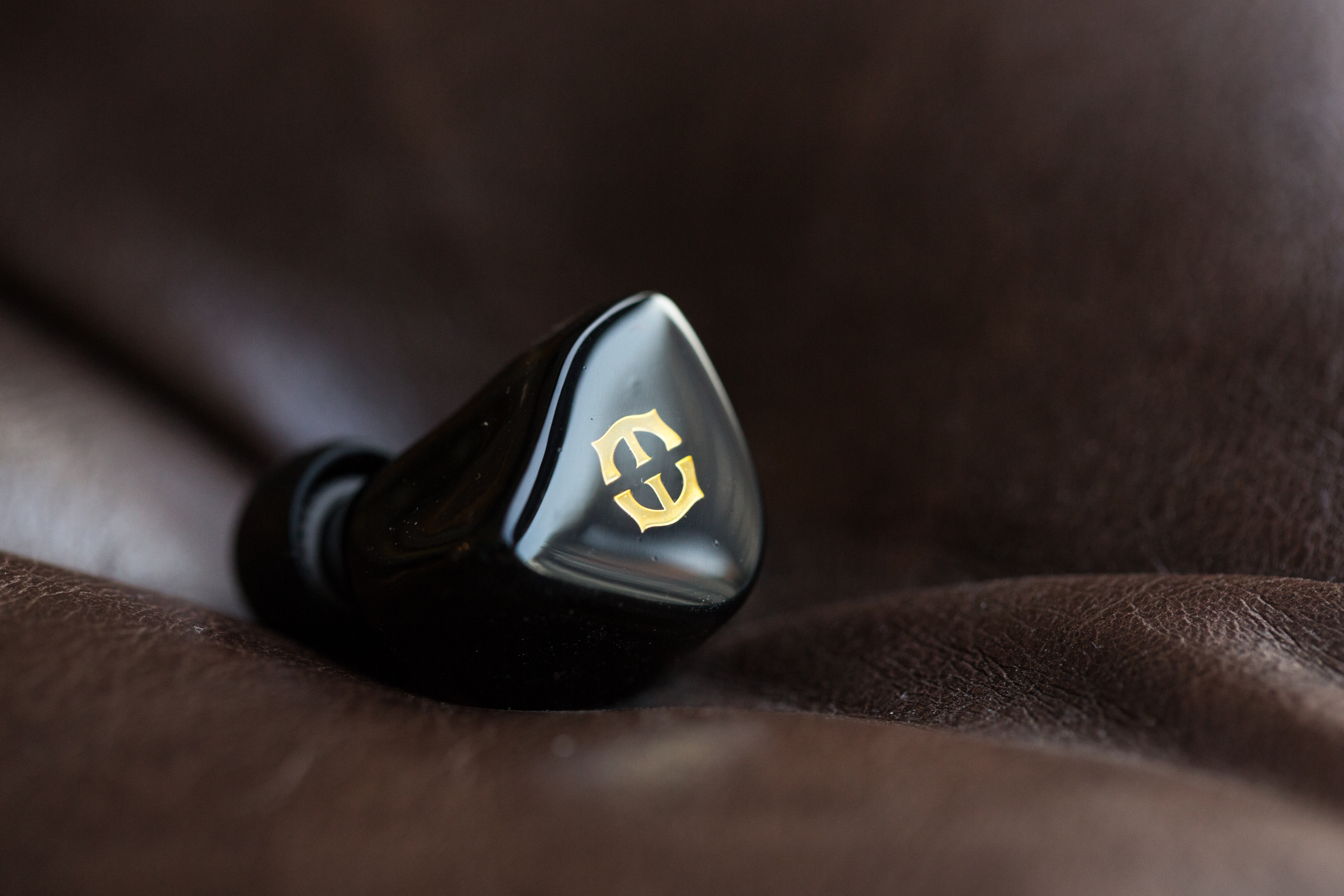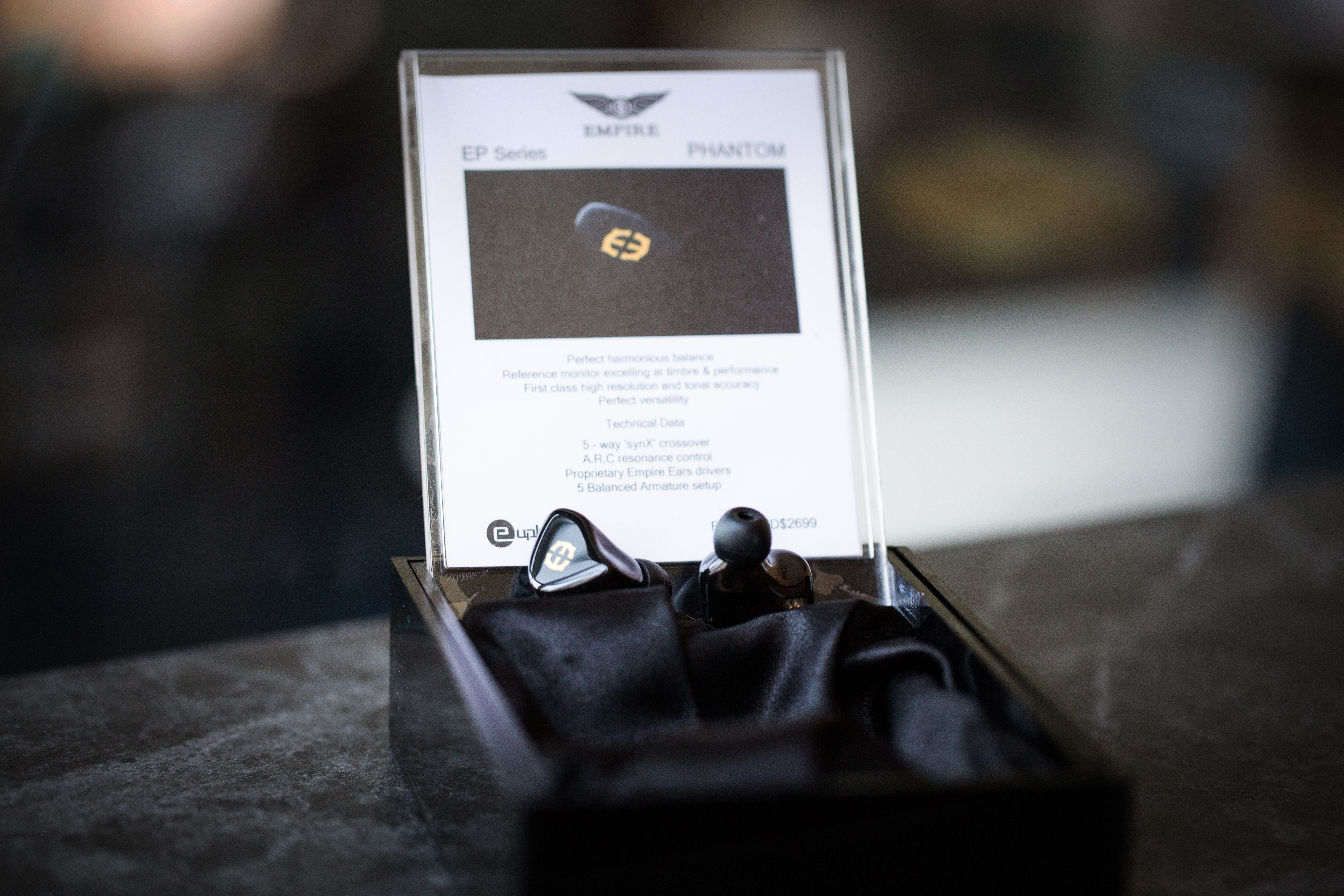The Empire Professional Line-Up
The Empire Professional – or EP – line-up was conceived with the audio professional in mind. Whether it’s in the studio or on stage, the following three IEMs were purpose-built to serve as reference monitors within their respective divisions. These IEMs were designed with inputs from several Grammy-Award-winning producers, while the flagship Phantom was specifically co-designed by none other than THL’s very own Nic Flinkenflögel (AKA Flinkenick).
Please note that all of the following prices are in Singaporean dollars.
 Empire Vocal Reference (S$888)
Empire Vocal Reference (S$888)
As the name suggests, the EVR is an IEM with an especial focus towards midrange presentation – namely, vocal clarity and intimacy. Those of you who’ve read my Vision Ears round-up would recall these exact terms used to describe the VE5, and the comparison is well-deserved. The EVR and the VE5 share several similarities, including a wide-span and wall-like midrange, paired with a generous upper-treble lift for sparkle and air. The EVR – as a result – has a noticeable tinge of brightness imbued into its instruments, but a fuller lower-midrange compensates for this to a sufficient degree.
While the VE5 doubles down on midrange transparency – compromising with a leaner, articulation-heavy presentation in the process – the EVR gives vocal weight its due. A linear lower-treble maintains smoothness and tonal coherency, while the upper-treble lift cleans and aerates the entire stage. Despite the brighter tone, bass timbre is impressive. Following a trend that will slowly become more and more apparent as the article progresses, the EVR displays excellent low-end extension and definition. It exhibits great delineation and minimal bloom with slight hints of richness. creating a pleasing bass response that adds a necessary element of fun into the IEM’s sonic palate.
Empire Studio Reference (S$1188)
The ESR is the closest of the three to the classic definition of neutral. Serving up equal quantities of bass, midrange and treble, it is a spiritual successor to monitors like the Ultimate Ears Reference Monitor and Empire Ears’ very own Spartan-IV – showcasing minimal colour and excellent malleability. Bolstered by a clean stage and excellent imaging, the ESR is surgical in its ability to probe any recording you throw at it. However, its greatest achievement is how it accomplishes this whilst sacrificing neither smoothness nor tone.
By relying on qualities like stage organisation, bidirectional extension, and background blackness, the ESR achieves great transparency with neither unsightly peaks in its top-end nor tinniness in its midrange. Instead, a slight bump in the upper bass endows vocals and instruments alike with sufficient warmth, and a slight lower-treble peak is all it requires for articulation. Confidently balancing speed, clarity and detail with smoothness, ease and finesse, the ESR is a worthy competitor in the reference IEM market – deftly manifesting the sweet spot between analysis and euphony.
Phantom (S$2699)
The Phantom is the flagship of the Empire Professional line. And yet, uncharacteristically, it was purpose-built for a singular aim. While the rest of the TOTL market strive for infinite detail, eye-watering clarity and limitless stages, the Phantom lets a single group of like-minded elements take precedent over them all: Naturalness, realism and organicity.
The Phantom tackles the sensibilites of a flagship piece without resorting to ubiquitous tropes; no upper-treble peak for clarity, no superfluous mid-bass bump, no lower-midrange attenuation, etc. The Phantom emphasises lesser-known elements, such as linearity, textural resolution, natural decay and timbral richness, to present music in the most life-like – and thus, uncoloured – way possible; a sincere representation of the recording. But, experiencing the Phantom doesn’t come without its own set of sonic quandaries : “What does uncoloured – or ultimately, natural – music sound like?” and “Do I want to hear my music this way?”
 Timbre and body define the Phantom’s overall presentation. Sporting a marvellously linear neutral-natural tone, the Phantom mesmerises with well-defined and full-bodied notes spread throughout its pitch-black stage. Listeners who’d enjoy thin, crisp and transient-heavy strikes should look elsewhere; the Phantom relishes in thick, gossamer overtones to manifest its buttery-smooth resolution. This isn’t a clarity-led presentation, as has become the norm over the past decade; this is a sound that’s all about colour, tone and texture. Notes aren’t as clean as they are fibrous, and instruments don’t float on air as much as air itself bends around them.
Timbre and body define the Phantom’s overall presentation. Sporting a marvellously linear neutral-natural tone, the Phantom mesmerises with well-defined and full-bodied notes spread throughout its pitch-black stage. Listeners who’d enjoy thin, crisp and transient-heavy strikes should look elsewhere; the Phantom relishes in thick, gossamer overtones to manifest its buttery-smooth resolution. This isn’t a clarity-led presentation, as has become the norm over the past decade; this is a sound that’s all about colour, tone and texture. Notes aren’t as clean as they are fibrous, and instruments don’t float on air as much as air itself bends around them.
A pronounced bass response forms the foundation of the Phantom’s bodied notes. Bold, syrupy and thick, its low-end emanates a beautifully natural tone. And yet, outstanding extension endows it with marvelous sub-bass activity; displaying low-end clarity and transparency with ease. The midrange follows suit with gorgeous dynamic range. Drawing warmth from both the bass and the lower-midrange, the Phantom’s vocal presentation is a living, breathing organism. Exhibiting outstanding power, exceptional definition and palpable depth, the Phantom’s midrange is skillful sleight-of-hand; manifesting itself as a whole, well-developed and singular soundscape, while all it really is is an extremely intelligent sum of its parts.
Treble is a similarly well-cooked endeavour. Extension and linearity both impress, crafting a treble that’s rounded, articulate and – most of all – smooth. While those who enjoy a sparkly, lively and razzle dazzle top-end might find the Phantom too smooth, there’s a unique pleasure that comes from relishing in a gentle, delicate and textured treble response; akin to a fuzzy silky sweater rather than a gruff leather jacket. Though alarms could be raised against the upper-treble’s lack of peaks, outstanding extension produces details galore – regardless of its warmth – and enriches the midrange with beautiful texture. The Phantom’s top-end is its philosophy in a nutshell; elegant, easy and unassuming, yet marvellously complex and technically sublime underneath.



11 Responses
Hello Kai,
I’ll let you know if I think of any. 🙂
Cheers,
Daniel
Hi,
=). Any others i can consider too?
Thnks
Kai
Hi Kai,
In that case, the Lime Ears Model X is a great option. It’s the monitor I listen to when I simply want everything to “sound good”. If you’re willing to go all out for a TOTL, the Vision Ears VE8 is absolutely fantastic, but it costs a ton. 😀 The VE8 bests the Model X in bass weight, note thickness, textural resolution and stage density/palpability, but the Model X at less than half the price is an absolute steal. I’ve had it for just under a month and it’s become irreplaceable in my collection, so that’d be my #1 recommendation with price-for-performance taken into account.
EDIT: It’s also worth noting that the Model X has no glaring weaknesses compared to the VE8. Aside from a more modest mid-bass (that can absolutely be brought out with the right cable), I can’t say there’s anything instantly wrong with the Model X that I’d be dying to fix. The Model X is sublime, but the VE8 – expectedly – is simply better. 😉
Cheers,
Daniel
Hi Deezel,
aah. its okay. hope you wouldnt mind recommending some custom that i should try.
am looking for something, that goes well with any genres, source “forgiving” as sometimes i do alt between my onkyo dp-x1 or my phone.
not very good in describing but something with clarity, good soundstage (for concert tracks). “All rounder” & easy to listen to?
Thanks
Kai
Hello Kai,
Unfortunately, I’ve tried neither. Sorry.
Cheers,
Daniel
hi, wonder if you had tried the “older” customs like fitear c435 and westone es5. curious how would you compare to this.
Thanks =)
new to the CIEM world but so far have been enjoying meeting and talking with the guys over at EE and EA….currently been waffling between the Horus and Janus cable for my Zeus XR Adel and cant thank Jack Vang and Eric Chong enough for their help. has been an expensive adventure searching for the optimal sound signature, but i have renewed my love for music production and appreciation for such delicate sound signatures…looking forward to developing a great bond and friendship with these guys in my search for supreme sound….being on the forums i can tell you have a great support team of testers leaving great reviews…please do let me know if you need any more audiophiles with a high sense on detail. love to be a product tester
At the event, Jack said these models were tuned without ADEL in mind, and he also implied that there aren’t any plans to include it in the future.
Will the new range feature ADEL options?
Thank you, Erik! I can’t wait for you to receive your Phantom’s, so you can experience their excellence first-hand. 😉
Very informative Daniel, you did a stellar job given the limited time you had available! A great reference article for anyone interested in the new Empire Ears series!